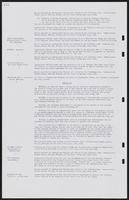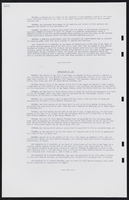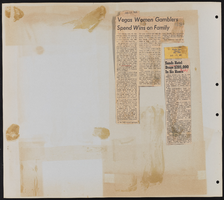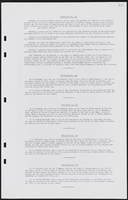Search the Special Collections and Archives Portal
Search Results
UNLV Libraries Collection of Gaming Research Files
Identifier
Abstract
The UNLV Libraries Collection of Gaming Research Files is a collection of materials that date between approximately 1900 and 2019. The collection mainly consists of materials relating to conferences and expositions, gaming research files, and gaming technology and equipment catalogs. The conference and exposition materials include registration books, pamphlets, and printouts. The gaming research contains annual reports from different casinos and universities, as well as newspaper clippings and website printouts. The subject files are organized by state or international location, and contain clippings, printouts, and pamphlets related to different aspects of gaming. Gaming technology companies, software, and equipment catalogs are also found within the collection. The collection also contains DVDs, tapes, and several books on gaming practices as well as newspaper clippings, brochures, and documents related to problem gambling.
Archival Collection
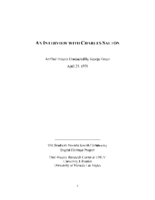
Transcript of interview with Charles Salton by George Green, April 23, 1976
Date
Archival Collection
Description
Interview with Charles Salton by George Green on April 23, 1976. Salton discusses arriving in Las Vegas in 1929, after his family had moved from New Jersey to Huntington Beach, California. His father sold real estate, and expected a boom after the authorization for the construction of Hoover Dam. His father was involved in bootlegging and then owned Al's Bar, a drinking and gambling establishment, on the alley at South First Street. Salton describes the area around Fremont Street and Las Vegas Boulevard with businesses and grocery stores, the grammar school and high school, and the hospital. Salton talks about his social activities, including involvement in the Jewish Community Center (Temple Beth Sholom), and several of the bars, clubs and casinos in the area. He briefly discusses the mob influence in the casinos versus corporate ownership and then speaks about the education system in Clark County.
Text
John R. Shown oral history interview
Identifier
Abstract
Oral history interview with John R. Shown conducted by Robert E. Pilgreen on March 18, 1978 for the Ralph Roske Oral History Project on Early Las Vegas. In this interview, Shown discusses his personal history living in Las Vegas, Nevada since 1953. Shown then describes casinos that were built during his lifetime, and recalls the development of the Las Vegas Strip. Shown then discusses gambling, and the effect that gambling has on the Las Vegas economy.
Archival Collection
Financial and economic reports, 1950 to 2017
Level of Description
Scope and Contents
Materials include reports on gambling (dating from 1950 to 2013) written or compiled by Eugene Martin Christiansen. The reports analyze the economic effects of gambling, the feasibility of building or relocating gambling establishments, legal and legislative restrictions on gaming, the financial risk of investing in gaming establishments, the social and cultural impacts of gambling, problem gambling, and the economic future of gambling activities such as horse racing. The reports were written by Christiansen, Christiansen Capital Advisors (previously known as Christiansen/Cummings Associates), financial institutions, and other academics and consultants.
Archival Collection
Collection Name: Eugene Martin Christiansen Papers
Box/Folder: N/A
Archival Component
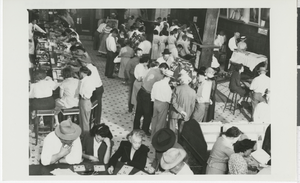
Photograph of people inside the Tonopah Club, Tonopah (Nev.), 1930-1950
Date
Archival Collection
Description
Image
UNLV Libraries Collection of Articles on Gaming and Las Vegas, Nevada Topics
Identifier
Abstract
The UNLV Libraries Collection of Articles on Gaming and Las Vegas, Nevada Topics consists of photocopied periodicals and book chapters on a wide variety of gaming and general Las Vegas, Nevada topics. The majority of the collection material focuses on problem gambling and were copied from psychology, psychiatry, and addiction journals originating in the United States and Europe. Original dates of publication range from approximately 1837 to 1999. Other topics include tourism, southern Nevada history, and Howard Hughes' influence in Las Vegas, Nevada.
Archival Collection

